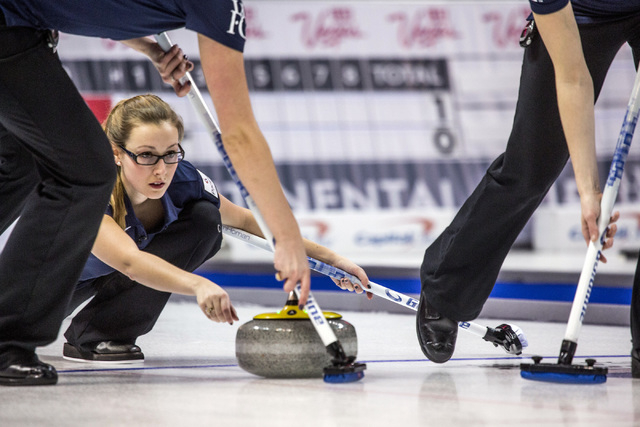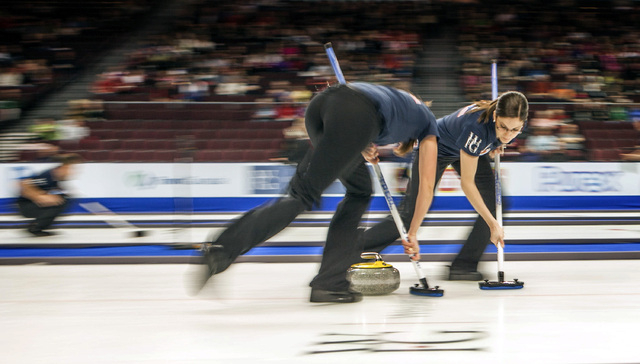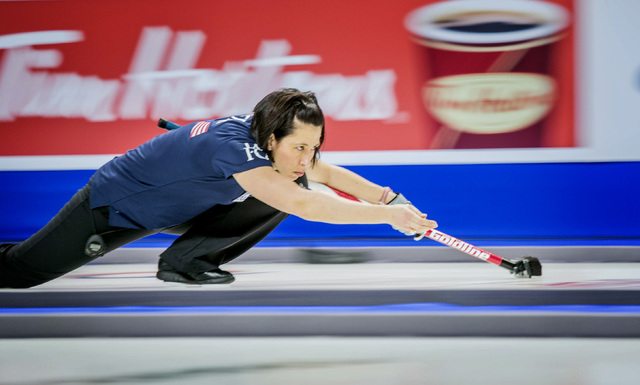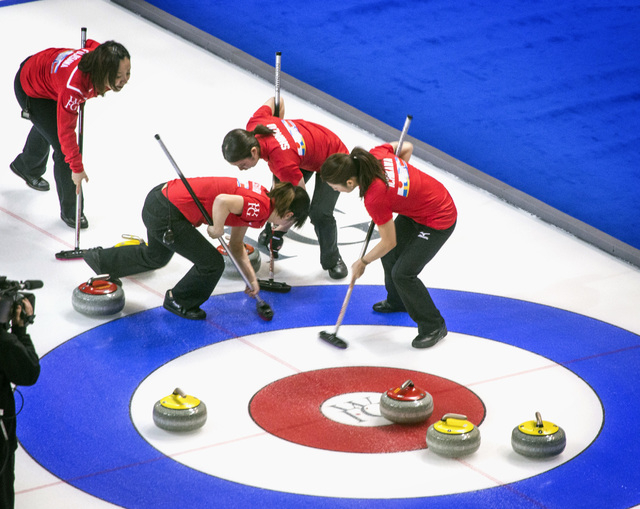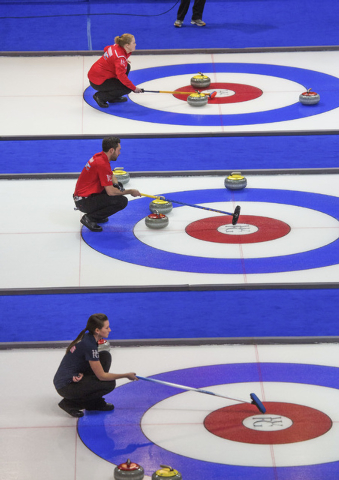A view from the hacks, without the gossipy bits
Before the last Winter Olympic Games in Vancouver, British Columbia, the only curling match I ever had witnessed featured John, Paul, George and Ringo in the Beatles’ movie “Help.” After one of the curling stones was rigged with a bomb — George called it a “fiendish thingy” — and Beatles-movie type hilarity ensued, I don’t recall who won, only that the Beatles sang “Ticket to Ride” or one of those songs from the soundtrack.
I think I also might have seen curling on “Wide World of Sports” once, when TV still was shown in black and white. But I was young, and it’s possible I might have mistaken barrel jumping on ice for curling.
During the Vancouver Olympics, MSNBC would show curling matches until the wee hours of the morning. Curling is an ancient game played on ice in which two teams of four players compete in sliding large stones toward a bull’s eye in the center of a circle.
I call it Canadian bowling.
Curling, like bowling, seems like a game you can play while drinking a beer. But unlike bowling, there’s a lot of strategy. It reminds me of that shuffleboard game they play in Iowa taverns, only shuffleboard is played with pucks instead of stones and it usually isn’t played on ice, unless the tavern hasn’t paid its power bill, in which case it can be.
So I became fascinated with Olympic curling, and then I got an eyeful of the skip (which is what they call the curling captains) of the Canadian team, a woman named Cheryl Bernard, and then I became infatuated with Olympic curling.
One night Canada played Denmark, and, oh man, the Danes trotted these four blond curlers onto the ice. As ESPN’s Bill Simmons said, “Anytime Canada and Denmark battle in women’s curling, you know you’re in for a special night.”
So when I heard this big curling match was coming to The Orleans this weekend, the Continental Cup, Team North America vs. Team World, the curling equivalent of golf’s Ryder Cup (except the American team has never celebrated by trampling on Jose Maria Olazabal’s putting line in the curling Ryder Cup), I knew I must check out this intriguing sport in person.
Upon picking up my pass, the first thing I asked event publicity guy Al Cameron was would they be serving Tim Hortons in the press room, because the Canadian doughnut giant was one of the official sponsors, and Tim Hortons honey crullers are to die for.
The second thing I asked was would Cheryl Bernard be romancing the stone, or whatever they call it up there.
Cameron said she would not be, that she is semi-retired. He also said that he and Cheryl Bernard hail from Calgary and were friends. And so I immediately was envious of Al Cameron, though he, like every other Canadian I’ve encountered, was unfailingly friendly.
So Cameron put me in a front-row seat with the international curling press, and I was ready to romance the stone, or whatever they call it up there, because as previously stated, I had stayed up late to watch curling during the Vancouver Olympics. And also because I had brought along an email from my Canadian pal Lloyd, who is from Saskatoon and was on the curling team in high school.
Lloyd said he had skipped his team his last two years with both feet in the hack, and he pushed the rock, and he beat them in a bonspiel.
So I started dropping some of that jargon on the curling writer sitting next to me. She wasn’t buying it, though, because she was from Scotland, where curling was invented during the 16th century. And also because I wasn’t wearing a jacket, and anybody who follows curling knows it can get chilly down there near the hacks (which are like starting blocks in track and field, where the skip casts the stones).
Christine Stewart (no relation to Jackie, the great Scottish racecar driver — but I had to ask) said she starting curling as a young woman, worked as a general assignment reporter for the Glasgow Sunday Post and, now that she is retired, blogs on curling for ViewFromtheHack.com. “I write the gossipy bits,” she said.
I don’t know how many gossipy bits one expects to find at a curling match set for 8:30 a.m. on a school day. But there must have been 4,500 curling fans at The Orleans at that hour, which must have driven Wranglers officials crazy, if they poked their heads out of the hockey office.
Three matches were going simultaneously. The skips would cast the huge curling stones down the narrow corridors of ice; the sweepers would sweep them into scoring position with their little brooms. Sometimes the skip would throw the stone perfectly and/or the sweepers would sweep them perfectly, and then a yellow stone would slam into a red stone — or every now and then two red stones — knocking the red stone or stones out of scoring position.
Then the crowd would go nuts and ring cowbells and wave Canadian flags. Except when the Swedish team or the Japanese teams were the ones romancing the stones, in which case the crowd still would go nuts and ring cowbells, but usually would refrain from waving Canadian flags.
Nobody rigged a curling stone with a bomb, and Cheryl Bernard and the Danish women weren’t there. But I took a shine to Alison Krevaziuk, who curls for Canada and wears glasses, and whose last name conjures an image of a hard-checking, third-line hockey forward who can dig the puck out of the corner.
The ancient sport of curling, when witnessed in person, is pretty darn cool. This is especially true if you don’t bring a jacket, and you find yourself sitting in the first row, closest to the ice, with both feet next to the hacks.
Las Vegas Review-Journal sports columnist Ron Kantowski can be reached at rkantowski@reviewjournal.com or 702-383-0352. Follow him on Twitter: @ronkantowski.



